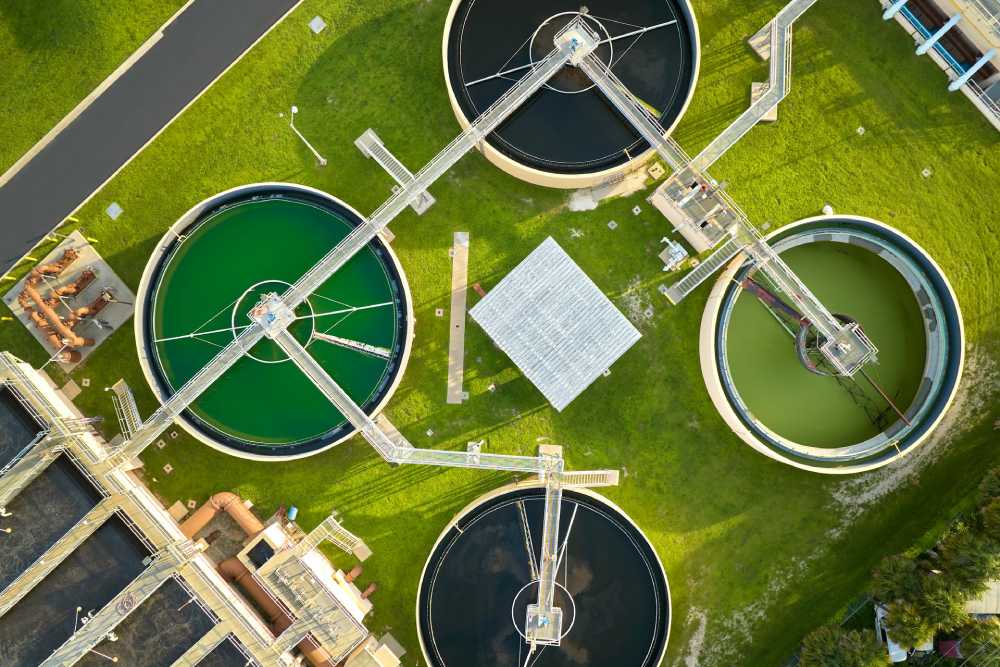Innovative Techniques Transforming Wastewater Treatment
Wastewater treatment is a crucial process for maintaining public health and protecting the environment. As industrial activities and urban populations grow, the demand for efficient, effective wastewater treatment solutions becomes even more pressing.
The role of a wastewater testing lab is vital in this context, providing precise analyses to ensure the right treatment methodologies are applied. This article explores various modern techniques that are revolutionizing the wastewater treatment industry by enhancing efficiency, reliability, and sustainability.
Contents
The Importance of Wastewater Treatment
Effectively treated wastewater is essential for preventing the spread of diseases and reducing environmental pollution. The Environmental Protection Agency (EPA) highlights that untreated or inadequately treated wastewater can introduce harmful contaminants into water bodies, threatening aquatic life and human health alike.
Hence, the implementation of reliable treatment systems and continuous monitoring is critical. Investing in effective wastewater treatment ensures public safety and contributes to environmental conservation, providing long-term benefits for all.
Biological Treatment Methods
Biological treatment methods utilize living organisms to decompose organic matter present in wastewater. These methods are highly efficient in reducing biodegradable contaminants. The most common biological treatment processes are activated sludge and biofiltration. By leveraging natural biological processes, these methods ensure that the water is sufficiently treated before discharge.
Activated Sludge Process
The activated sludge process involves aeration and a biological floc comprising bacteria and protozoa. In this method, wastewater is aerated in an aeration basin, allowing microorganisms to break down organic pollutants.
The resulting solid-liquid mixture is then settled in a secondary clarifier to separate the treated water from the biological mass, which can be reused in the treatment process.
Chemical Treatment Methods
Chemical treatments are integral to wastewater purification, involving the addition of chemicals to neutralize or eliminate pollutants. Techniques such as coagulation and flocculation are commonly used, where chemicals induce particles to clump together, facilitating their removal.
These methods are particularly effective in extracting pathogens and heavy metals, ensuring the treated water meets safety standards before being released into the environment.
Coagulation and Flocculation
Coagulation involves adding coagulants to destabilize and aggregate suspended particles, forming larger clusters known as flocs. Flocculation follows, where gentle mixing encourages the flocs to bond together, making them easier to remove through sedimentation or filtration.
This two-step process is essential for removing fine particulates and is widely applied in both municipal and industrial wastewater treatment.
Physical Treatment Methods
Physical treatment methods, such as sedimentation and filtration, serve as fundamental steps in the wastewater treatment process by removing solid particles effectively. These techniques often precede biological or chemical treatments, ensuring the water is adequately pre-treated.
Sedimentation utilizes gravity to settle heavy particles at the bottom of treatment tanks, while filtration employs various media to remove suspended solids, making the subsequent treatment steps more efficient.
Sedimentation
Sedimentation is a straightforward yet highly effective method for removing solids from wastewater. During this process, the wastewater is held in a sedimentation basin, allowing heavier particles to settle at the bottom due to gravity.
These settled particles, known as sludge, are then collected and treated separately. This initial step is crucial for reducing the load on biological and chemical treatment stages, enhancing overall treatment efficiency.
Emerging Technologies
Innovative technologies pave the way for more advanced and sustainable wastewater treatment solutions. Techniques such as membrane bioreactors (MBRs) and advanced oxidation processes (AOPs) are gaining popularity due to their superior contaminant removal capabilities and operational efficiency.
These emerging technologies hold great promise for the future, offering robust solutions to address the growing challenges in wastewater management.
Membrane Bioreactors (MBRs)
MBRs combine a biological treatment process with membrane filtration, resulting in high-quality effluent and a compact treatment footprint. These systems are particularly effective in treating municipal and industrial wastewater, providing significant advantages in terms of effluent quality and space requirements.
Advanced Oxidation Processes (AOPs)
AOPs employ strong oxidizing agents, such as ozone and hydrogen peroxide, to degrade organic pollutants in wastewater. These processes generate hydroxyl radicals, which react with contaminants, breaking them down into less harmful substances. AOPs are particularly effective for treating recalcitrant compounds that are difficult to manage using conventional methods.
Environmental and Economic Benefits
Modern wastewater treatment techniques offer significant environmental and economic benefits. Improved wastewater treatment results in cleaner water bodies, safeguarding ecosystems and enhancing biodiversity.
Economically, advanced treatment systems can reduce operational costs, minimize waste, and enhance resource recovery, such as the extraction of energy and nutrients from wastewater. The long-term cost savings and environmental protection make these technologies essential investments for sustainable development. For this reason, it can be important to take advice from a wastewater consultant for effective treatment solutions. They can develop strategies to make sure the treatment systems are compliant with regulatory standards, which can further improve their long-term value.
Challenges and Solutions
The wastewater treatment industry faces several challenges, including high energy consumption, complex regulations, and the management of treatment by-products. Addressing these challenges requires innovative approaches and technological advancements.
Strategies such as energy recovery, the development of eco-friendly treatment methods, and continuous research and development are crucial for overcoming these hurdles.
According to a recent study, advancements in nanotechnology could provide innovative solutions to persistent challenges in wastewater treatment. Nanomaterials, for instance, can enhance the removal of contaminants and improve the efficiency of treatment processes, offering a promising avenue for future research and application.
Conclusion
In conclusion, the evolution of wastewater treatment methodologies marks a pivotal moment in safeguarding public health and environmental sustainability. The industry is witnessing a transformative shift towards more efficient, reliable, and sustainable solutions, from traditional biological and chemical treatments to emerging technologies like membrane bioreactors and advanced oxidation processes.
These innovations ensure the removal of harmful contaminants and offer significant environmental and economic benefits, including cleaner water bodies, reduced operational costs, and enhanced resource recovery.
Despite facing challenges such as high energy consumption and regulatory complexities, ongoing research, and development, alongside the potential of nanotechnology, promises to further revolutionize wastewater treatment, securing a brighter, more sustainable future for generations to come.

